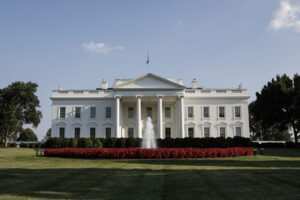How communicators can cut through the noise during times of change
Communicators are a conduit for stability — when they can get their messages through.

Times of change are inevitable in any organization. They may come in the form of mergers, layoffs or leadership changes. But no matter the shifts within a company, communications plays a critical role in maintaining stability and charting a course to the future through smart internal comms.
One major challenge during these times is to ensure that, amid the everyday flow of messaging within an organization, the most mission-critical communications reach the right people at the right time.
We spoke to several comms pros and leaders to gain their perspectives on how communicators can push past the noise and drill right to the center of what’s important organizationally during times of change.
Breaking through
The role of the communicator in today’s workplace is more multifaceted than ever before. Comms pros are advisors to leadership, strategists within the business and much more. But more fundamentally, communicators are organizational storytellers. And when major changes arise, there might be multiple messages coming from multiple people that can sow the seeds of confusion within the employee base.
Step one for cutting through the noise is consolidation.
“One idea is to combine messages whenever possible and when it makes sense,” said Peg Kates, director of global employee communications at SAP. “Don’t send three communiques if one well-written message can logically cover multiple topics or issues.”
In addition to combining messages for maximum impact, positioning them as coming from leadership is another effective way to get the attention of employees. This combined with strategic message targeting stand a great chance at being effective.
“Messages are more likely to be read if they come from the Board, CEO or other respected senior leaders,” Kates said. “If it’s critical that something is received by the full employee base, it may need to come from the top. And as always, target messages to more specific audiences wherever possible — if it doesn’t need to go to everyone, don’t send it to everyone.”
During times of change, communicators need to mitigate the changes of the rumor mill churning over potential shifts in the organization. Comms pros have a direct role in stemming that tide by leading with important information and company actions at the top of any messaging materials. They should also be prepared for a wide array of reactions from employees.
“Some changes may be well-received, and other changes may cause uncertainty, fear, anxieties, and prevent the message from resonating,” said Katie Archer, change management and communication manager at Westfield Insurance. Communicators should use clear, concise, and upfront language to make sure the message is clear and doesn’t lead to assumptions.”
Messaging for the entire organization
Putting together great change comms messaging is one thing. Getting people to actually read or view it is entirely another. While there’s no magical formula, staying attuned to what your organization’s employees do and don’t react to is key.
“You might push out something that you thought was important and then talk to some employees/colleagues and realize that they don’t see why the message sent out was necessary,” said Katie Cessna, internal communication and growth director at BLASTmedia.
Cessna shared how her team created a group to determine the chances for comms success and how it can apply to those seeking to establish priorities for change comms.
“I established an internal comms committee of five to eight people in various roles within our organization to better understand this at our business,” she said. “I meet with them to understand what is a flop and what works. Speaking with them also helps me know what’s important to them and how to manage that with executives when working on prioritization.”
Another way to figure out what messaging might cut through the noise and what might not is a self-questionnaire of sorts.
“Ask yourself: Does this info apply to all employees or is it restricted to a region or specific area of the company?” said Molli Jordan, vice president of global communications at SAP. “Are we legally and/or ethically required to share this information? Is there a financial implication to this information? Will NOT sharing this information break trust with employees? Have scenarios or a checklist that you run through to help you decide on what should and shouldn’t be shared.”
She added that creating audience personas and employing them during times of change can help comms pros effectively strategize.
“Audience segmentation is absolutely warranted when info only affects a sub-set of your employee base,” Jordan said. “Consider sharing that kind of info via existing town halls hosted by that group.”
Change comms can be challenging to get right for any communicator. But with the right strategy, outreach and prep work, your messaging can cut through even the densest noise for maximum impact.
Sean Devlin is an editor at Ragan Communications. In his spare time he enjoys Philly sports, a good pint and ’90s trivia night.







